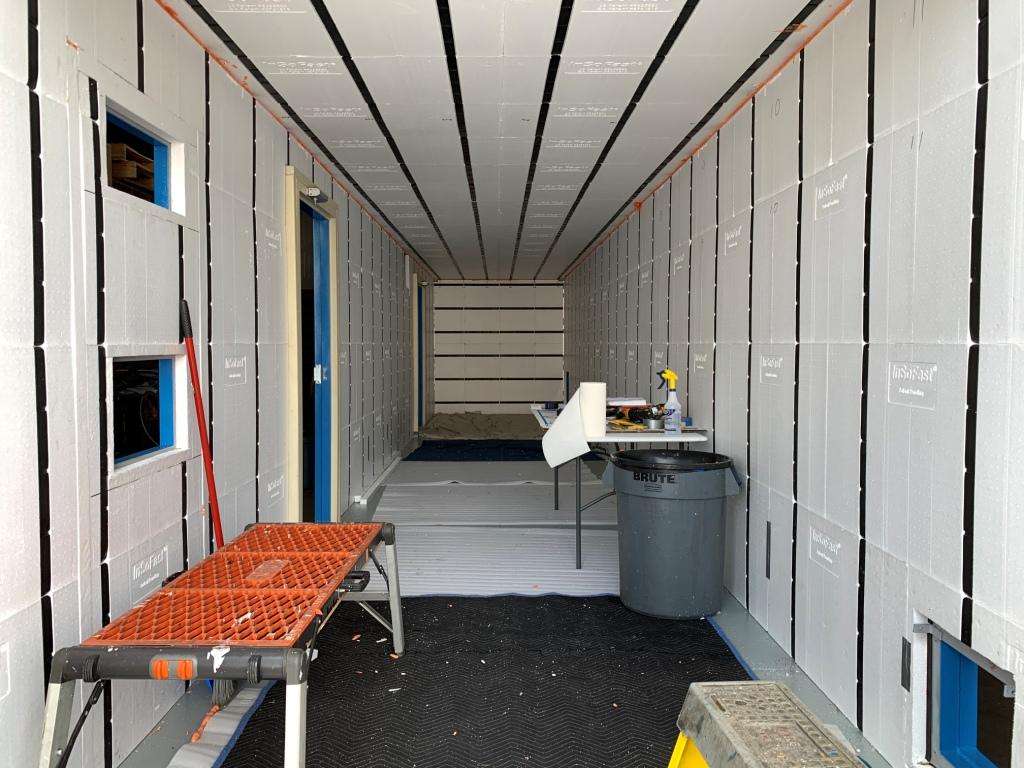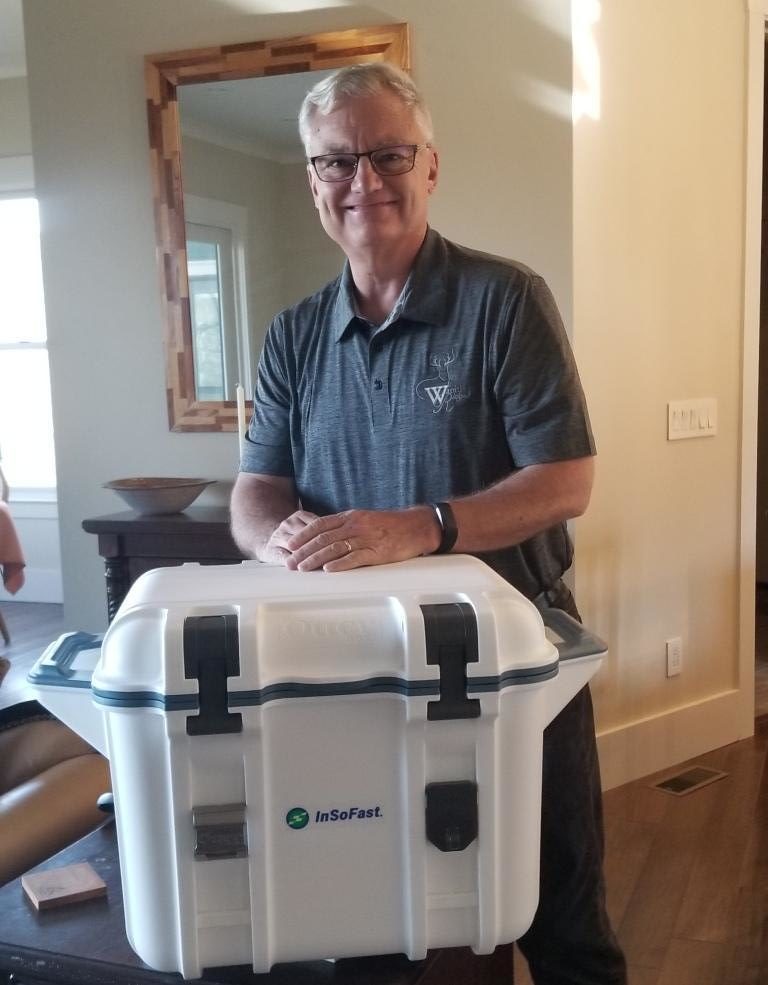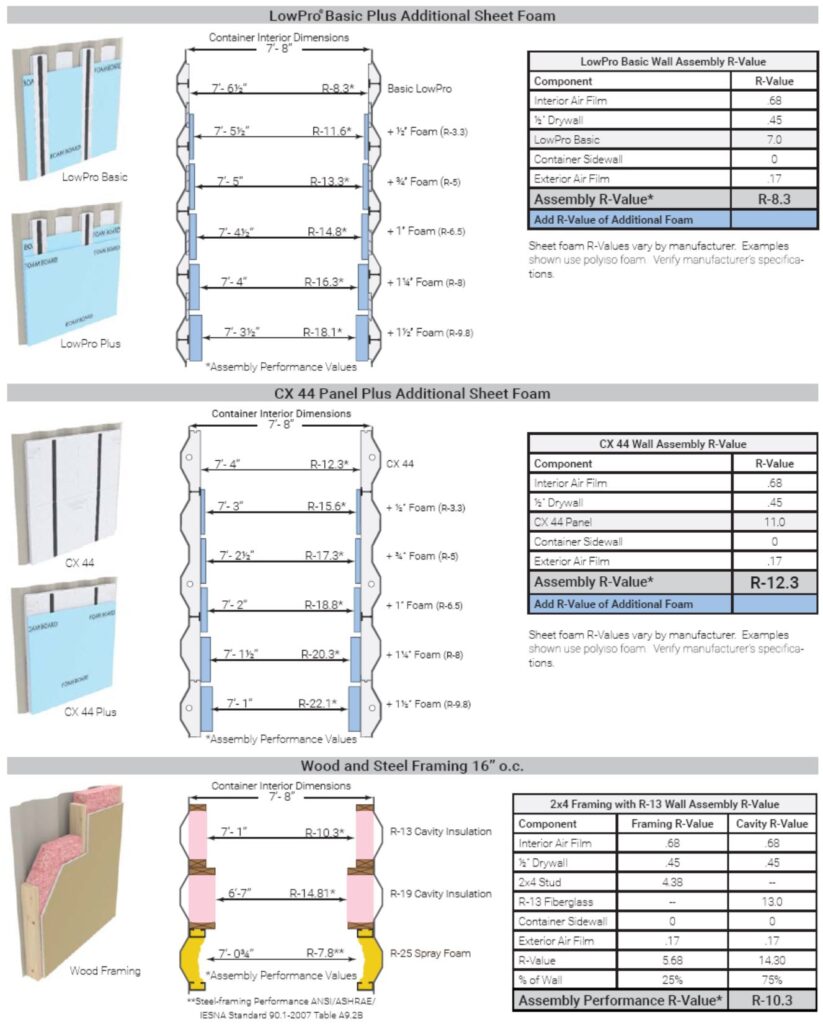Why does condensation occur in my container and how does insulation solve this?
Good question but a complex answer with a lot of variables. To simplify, for example, if you pull an ice-cold drink out of a foam cooler on a humid summer day, you will almost immediately notice condensation forming on the sides of the can. This is exactly what happens to the cold walls of a container. Warm air meets cold can causing (condensation). The simple answer if you take the same insulation from a foam cooler and you wrap it onto a shipping container wall, condensation is controlled.

Does using InSoFast solve my condensation problem?
Unlike traditional home building plagued by hidden condensation problems from air leakage, containers have the opposite challenge. To start with you have chosen a better shell that has nearly zero air leakage. InSoFast can help you with a comprehensive approach for controlling cold surface condensation. Adding InSoFast’s proven airtight insulated lining reduces this temperature change condensation.

How do you control relative humidity?
The next challenge is that whole relative humidity stuff. The complexity in controlling humidity levels in a container depends on the climate zone and moisture storage capacity of the finish materials. Different applications like agricultural uses or living spaces with higher humidity levels need more insulation and HVAC control. It is not just about more insulation but the right balance of insulation and HVAC controls.
Why use Expanded Polystyrene insulation for shipping containers?

A common use of Expanded Polystyrene is for safely transporting perishable food items and medical supplies. EPS has been used for ice chests, foam coolers, forever and the manufacturing of EPS is regulated to very high standards of quality and safety. Independent Testing Laboratories have clearly proven over and over again the effectiveness and temperature protection you can expect from thick-walled ice chests. InSoFast simply guides you on the best approach to apply this proven technology for your shipping container conversion projects.
Should I vent or not?
Occupants breathing, showering, and cooking all produce excess moisture in traditional home construction. Water vapor can be controlled by various means; the most basic is air leakage through the building’s envelope, like windows. Containers cannot rely on air leakage to control humidity, unlike frame construction, shipping containers are airtight. To prevent excessive moisture buildup that can lead to condensation, a proper mechanical ventilation system to remove moisture and a supply of fresh air is still an important design element. To minimize wintertime condensation on windows or cold surfaces, you must lower the relative humidity of the air to keep it below the dew point of the surface. So yes you should vent but control what you vent. This is not “vent” to be confusing, you need a good quality mini split to control your air.
- A steel container is airtight, to prevent excessive moisture/condensation, a proper mechanical ventilation systems to control moisture and a supply of fresh air, is still an important design element.
- Dew Point Calculator
InSoFast has applications in places ranging from the jungles of Africa, to the Arctic Circle; we are pretty sure that our insulation will work just fine for you.
What building codes do I need to know about?
You will face a lot of obstacles with building codes and R-Values requirements are designed for traditional framed construction. Shipping container are not traditional. InSoFast has information available to help you navigate your local requirements. While codes are well-intentioned, they don’t consider the airtight and diminutive size of a shipping container. Local townships will hold container construction to a higher standard, because it is different. Here is some basic information to get you started with deciphering building codes.
- Building energy code requirements.
- Modular Building Institute and National Portable Storage Association, Compliance Handbook.
- InSoFast Nationwide Code Compliance Report
How do I maximize interior space?
It’s easy to increase your R-Value beyond code minimums while maintaining the engineered benefits and maximum interior space with InSoFast panels. InSoFast lets you balance high performance wall insulation boards against the need for valuable interior LIVING space.
- For more information about “Space vs. R-Value” go to our InSoFast PLUS page.
- Download Chart as a PDF for code submittal. Shipping Container R-Value vs Space Comparison InSoFast



